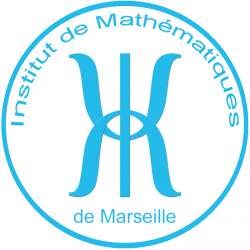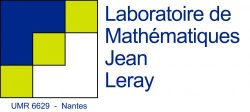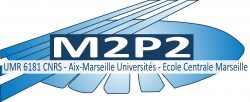Communications systems
- 17 May 2017
Institut de Mathématiques
Marseille

Compétences
The institute is divided into 5 scientific groups, some of which are themselves divided into thematic teams: Applied Analysis (AA) Arithmetic, Geometry, Logic and Representations (AGLR) (3 teams): Arithmetic and Information Theory (ATI) – Programming Logic (LDP) – Representations of Reductive Groups (RGR) Analysis, Geometry, Topology (AGT) Random Mathematics (ALEA) (4 teams): BioMaths Alea (BMA) (2 themes): Mathematics and Algorithms for Systems Biology (MABioS) and Mathematics, Evolution, Biology (MEB) – Probability (PROBA) – Signal and Image (SI) – Statistics (STA) Geometry, Dynamics, Arithmetic, Combinatorics and their Interactions (GDAC)
Équipements
Biophotonic platform
Optical thin film platform (photonic space)
Microwaves Platform
Power photonic platform
Light scattering metrology platform
Optics for biomedical
High Performance Computing
Nantes
Compétences
– Partial Derivative Equations.
– Mathematical Physics.
– Geometry and Global Analysis.
– Probability, statistics and numerical analysis.
– Topology, Geometry and Algebra.
Équipements
The NANO LYON Technology center based at INL allows its staff to create microelectronic and optoelectronics components for Microsystems and biochips.
Main Equipment:
Awhite room equipped with electronic and optic lithography, material deposition, an ionic reactive engraving reactor and a platform for chemical micro-manufacturing.
Two epitaxy reactors by molecular projections for III-V and two plasma reactors for depositing dielectrics.
Characterization equipment (electric, optic, structural, surfaces).
Calculation means.
M2P2 Laboratory
Marseille
Compétences
ITC: Aerodynamic flows – Biological flows – Flows for magnetic fusion – Hydrodynamics and parietal transfers TONIC: Thermal effects in rotating systems – Waves and submerged interfaces – Modeling of reactive multiphase flows – Modeling and simulation of forest fire propagation – Thermodynamics of TED mixtures : Biological Processes – Thermal Processes – Tools and Transverse Approaches PROMETHICS: Micro-objects deformable under hydrodynamic forcing – Microfluidics and processes – Organization of flows at small scales – FSC membrane separations: Supercritical extraction – Supercritical fractionation – Particle generation, crystallization, encapsulation – Impregnation (polymeric matrices and implants, silicas. EPM : Membrane bioreactor – Characterization of membranes and drinking water – Industrialization of processes and CFD – Transport and Metrology properties – Effluent treatment – Process intensification
Équipements
Extraction, crystallization and impregnation autoclaves – Pilots: supercritical fractionation; gas permeation; pervaporation, reverse osmosis, nanofiltration, ultrafiltration; wet oxidation; submerged aerated membrane biofilter – Two and three-phase rheological property characterization bench – Calorimetric reactor – Biofilm bioreactors (aerobic and anaerobic) 2 technological platforms: GP – Process Engineering SNA3 – Numerical Simulation for Aerodynamics, Aeroacoustics and Aerothermics.

